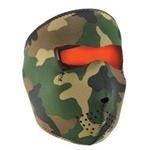One of the best ways to ensure a safe and enjoyable trip is to prepare yourself with the appropriate equipment for your outdoor activity! Urban cycling, commuting, and road biking all involve many of the same preparatory elements and checklists due to their road use and public nature. Whether you bike to work every day or want to prepare yourself for a quick, fun cycling trip on paved streets, be sure to review the checklists below.
Click here to download a printable PDF shopping list.
Item | Why You Need It |
Bicycle | Mobility for your Cycling Trip |
Basic Gear
Beyond the necessary bicycle and helmet, there are still a list of basics that you will likely want to invest in to ensure a comfortable trip. Due to the shorter distances that are typical of urban or road biking excursions, you’ll likely not need to bring as much gear as someone who participates in multi-day touring trips. Commuters and urban cyclists who will be biking farther from home will likely also want to carry with them some simple repair items like a repair kit and/or a replacement tire as well.
Item | Why You Need It |
Medical Info/Card | Useful for Emergency/Healthcare Workers |
Secure Transportation of Goods | |
Keep Lips Hydrated and Protected | |
Keeps Electronics Secure and Visible | |
More Visibility | |
Alert Nearby People of Your Presence | |
Improve Visibility | |
Make Yourself Visible to Others | |
For Minor Adjustments | |
Keep Your Bike Secure When Not in Use |
Clothing
For a casual ride down the street, you may be comfortable with whatever outfit you chose for the day, but if your ride is at dawn/dusk, during foul weather, or extending over the course of several hours or days, then it’s time to filter through this checklist to ensure that you’re outfitted and ready to go. Keep in mind that it’s always better to be safe than sorry, so wear or pack layers during chilly weather that can be removed as you cycle and warm up throughout the day.
Item | Why You Need It |
Shields Face from Cold Winds | |
Blocks Sun from Eyes | |
Added Visibility to Others | |
Keeps Sweat Away from Skin | |
Padded Shorts or Leggings | Designed to Add Comfort When Cycling |
Protects from Elements | |
In Case of Inclement Weather | |
Cycling Footwear | Comfort for Your Ride |
Shoe or Toe Covers | Protects from Cold and Wet Conditions |
Additional Warmth | |
Extra Layer of Warmth for Head | |
Keeps Ears Warm |
Post-Ride Items
Those who commute via bike or just participate in urban and road biking will likely want to bring with them some extra gear or clothes that can transition the cyclist from ‘riding gear’ to ‘casual wear’. Post-ride items can be stored in a saddlebag or backpack, or one can simply keep these items at the destination as well.
Item | Why You Need It |
Change of Clothing | Transition from Cycling to Casual Wear |
Off-Bike Footwear | For Comfort in Casual Wear |
Towel/Washcloth | Wipe Away Dirt and Sweat |
Refresh and Clean Up |
First Aid
A short cycling trip around the block means that the cyclist can probably forego carrying a first aid kit with them, but urban cyclists and commuters will want to keep a small kit with their bike to tend to any minor scrapes or ailments that could occur before reaching their destination.
Item | Why You Need It |
Reduce Pain for the Ride | |
Blister Treatment | Cover and Protect Blisters |
Additional Safety Tips
When not in use, keep supplies and gear in a dry area and inspect them before each trip.
Stay up to date on First Aid and CPR training.
Keep your first aid kit stocked, and know how to use all of its contents.
Stay hydrated.
Dress in reflective clothing.





